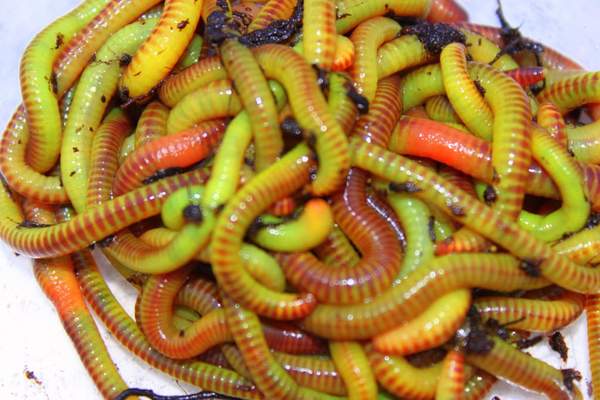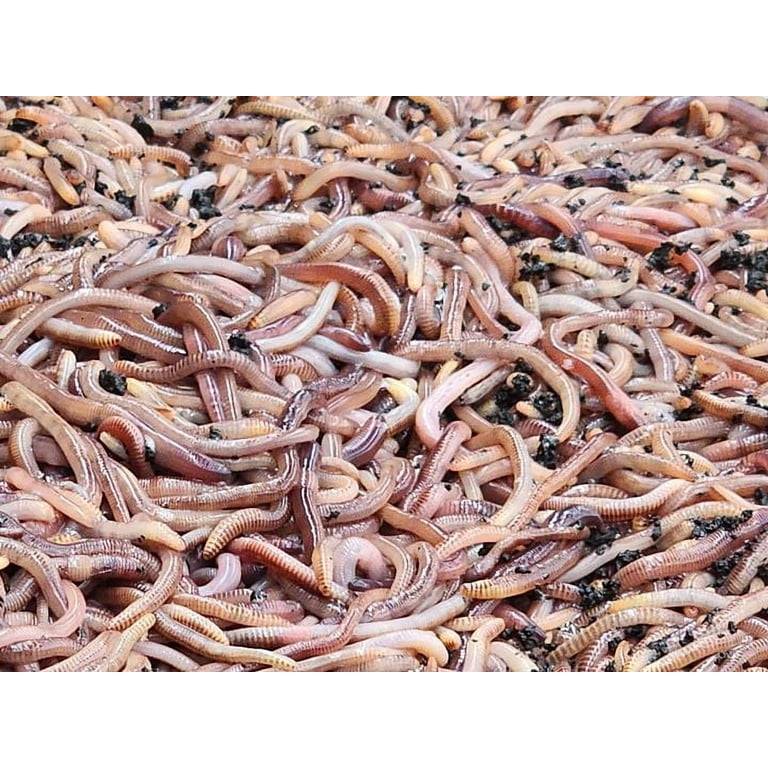The Basic Principles Of Where To Find Red Wigglers
Table of ContentsNot known Details About Where To Find Red Wigglers Facts About Where To Find Red Wigglers RevealedUnknown Facts About Where To Find Red WigglersWhere To Find Red Wigglers Fundamentals ExplainedSome Known Questions About Where To Find Red Wigglers.6 Simple Techniques For Where To Find Red Wigglers
For finest results, you intend to aim for regarding 60-70% wetness degree. The most basic test for this is to squeeze a handful as hard as you can. At the perfect moisture levels which is simply under 70% that handful need to hardly generate one drop of liquid. pH in a worm bin is rather easy to keep.
The Indian Blue is voracious, however also chooses a warmer climate and it additionally exhibits a propensity to leave the container. The red wiggler is a sturdy worm and isn't as choosy concerning its climate. I such as to call it the Ford Taurus of vermicomposting worms; you won't brag to your hardcore composting pals that you own them, however they will certainly offer you well.
As Tap showed, an angler can do a great offer to make a worm extra appealing.
Getting The Where To Find Red Wigglers To Work
I believe you will certainly also if you attempt them. The smaller sized the trout stream, the better worms work is an axiom that hasn't altered in the 100-plus years because Perry created his post. Fishermens of his age simply stuck their rickety fly poles with alder tangles and went down a weighted worm into a deep opening.
Morning is prime feeding time, and the weightless bait's sluggish descent leaves 5 inches of wriggling protein in complete sight for quite a while. After you've made the cast, maintain the bail open and placed the pole in a forked stick. The line will certainly drop off the pole in slow loopholes as the worm works out, yet typically the sluggish loops will certainly come to be a blur, and the morning will suddenly obtain rather fascinating.
You can fish deep and cover a great deal of territory, and the crawler seems to be the perfect touch for this transitional time, when the smallmouths have yet to secure on to a preferred forage. Dark jigsblack, brownish, and purpleseem to match the nightcrawler's color. I generally make use of a whole 'crawler, favor marabou dressing, and go down the rod for 2 or 3 secs when I obtain a hit.
And distinguishing base from a bite can be hard. The trick is to alleviate the pole back to the strike (maybe a foot) and really feel for life at the end of the tightening line. If it's there, set the hook with a move instead than a jerk. Occasionally you'll discover yourself hooked to those slow, passionate tugs, and feel the weight of a good walleye.
Fascination About Where To Find Red Wigglers
When the heavy walleyes proceed to the big-water shoals in the late summertime, attempt pursuing them with a bucktail jig and a 1-inch pinch of nightcrawler. The lure covers the hook factor, disperses weeds, and uses a taste of prey. With nothing dangling or flapping, it remains protected no matter of present, casts, or ambitious panfish.
Whether you're wading or fishing from a boat, drifting worms is among the excellent browsing methods for larger rivers. For trout, a spade-dug, 4-inch yard worm is the ideal dimension; for bass, walleyes, and steelhead, a nightcrawler may be a better option. The trick is to wander the bait with feeding and holding areas because fish in existing are not mosting likely to chase after down the lure, as they could in still water.
Strikes will certainly come as a sharp pull instead than a pull or rap. Fish the changes: mouths of tributaries, bank-side slicks, and the sides of large swimming pools. As the late Ed Zern, Field & Stream's excellent satirist, once placed it: Fishermens are birthed honest but they overcome it. His rule puts on any type of number of angling maneuvers, consisting of the issue of adding an item of worm to a damp fly.

The Single Strategy To Use For Where To Find Red Wigglers
Fill it with shredded newspaper, leaves, peat moss, and dirt. Moisten lightly. Cover and let rest for a week. Add a couple of why not check here hundred worms and click here for more feed them 2 times a week. Maintain the bedding wet yet not wet. On the food selection: lettuce, vegetables and fruit waste, and the periodic nongreasy leftover.
Just like veggie scraps, you can take your made use of coffee premises and add them to a worm box. Worms enjoy consuming coffee grounds.
When the hefty walleyes proceed to the big-water shoals in the late summer season, attempt pursuing them with a bucktail jig and a 1-inch pinch of nightcrawler. The lure covers the hook factor, deflects weeds, and offers a taste of victim. With nothing dangling or flapping, it remains safe regardless of present, casts, or enthusiastic panfish.
Some Known Facts About Where To Find Red Wigglers.
Whether you're wading or fishing from a watercraft, wandering worms is just one of the excellent searching strategies for bigger rivers. Where To Find Red Wigglers. For trout, a spade-dug, 4-inch garden worm is the right dimension; for bass, walleyes, and steelhead, a nightcrawler may be a far better selection. The secret is to wander the lure through feeding and holding locations because fish in existing are not going to go after down the bait, as they might in still water
Fish the about his changes: mouths of tributaries, bank-side slicks, and the sides of large swimming pools. His dictum uses to any number of angling maneuvers, including the matter of adding an item of worm to a wet fly.
Yet raising your own bait implies you can unclothe the home and struck the pond prior to Mom comes homejust like in the old days. Here's how to keep a worm box: Cut a sheet of CDX-grade plywood, which is made with waterproof adhesives, to your dimensions. Nail it with each other and drill a lots 12-inch holes in all-time low for drainage.
See This Report about Where To Find Red Wigglers
Load it with shredded paper, leaves, peat moss, and dirt. Moisten gently. Cover and let rest for a week. Add a couple of hundred worms and feed them 2 times a week. Maintain the bed linens moist however not wet. On the food selection: lettuce, fruit and vegetable waste, and the periodic nongreasy leftover.
Simply like veggie scraps, you can take your utilized coffee premises and include them to a worm box. Worms enjoy consuming coffee grounds.